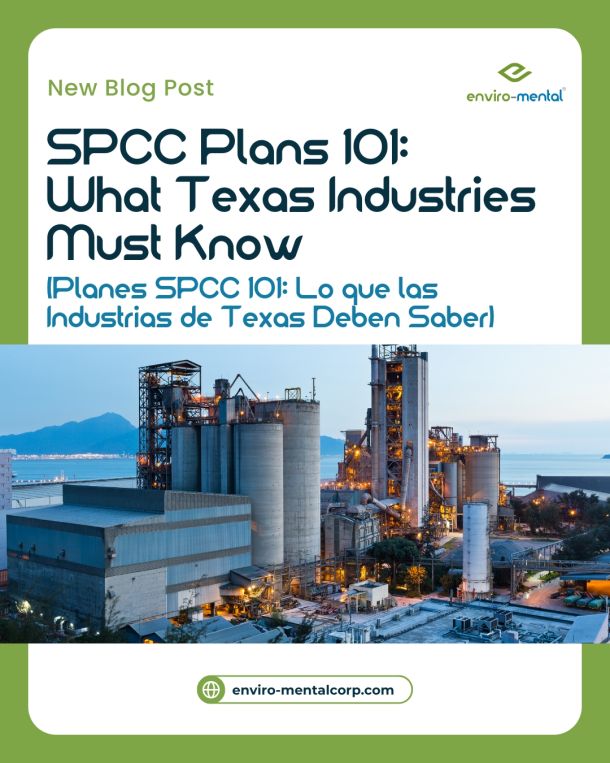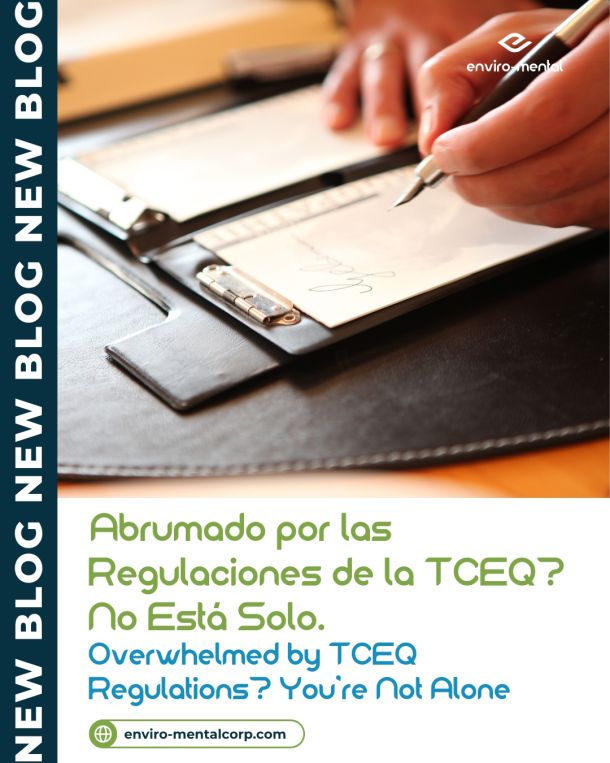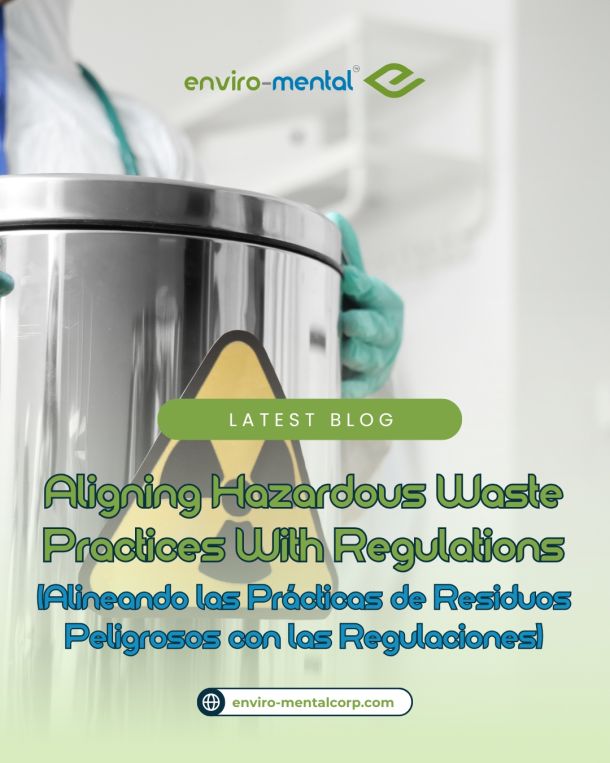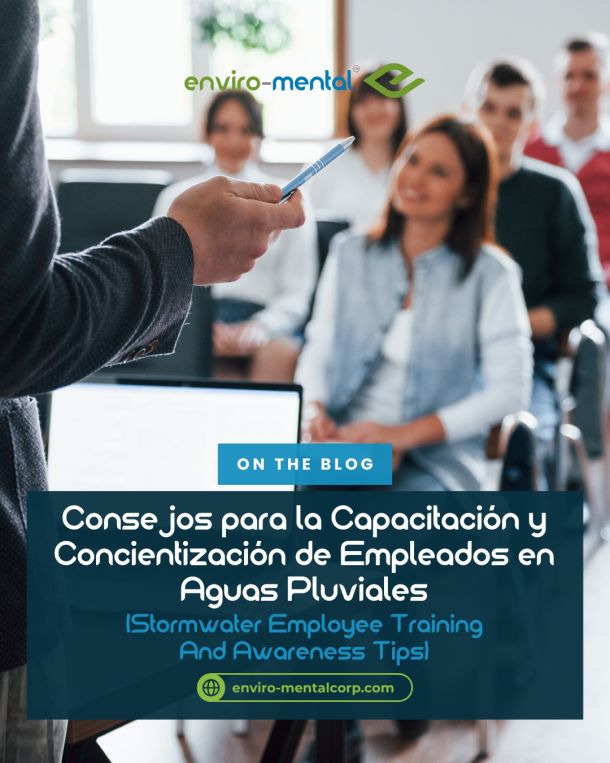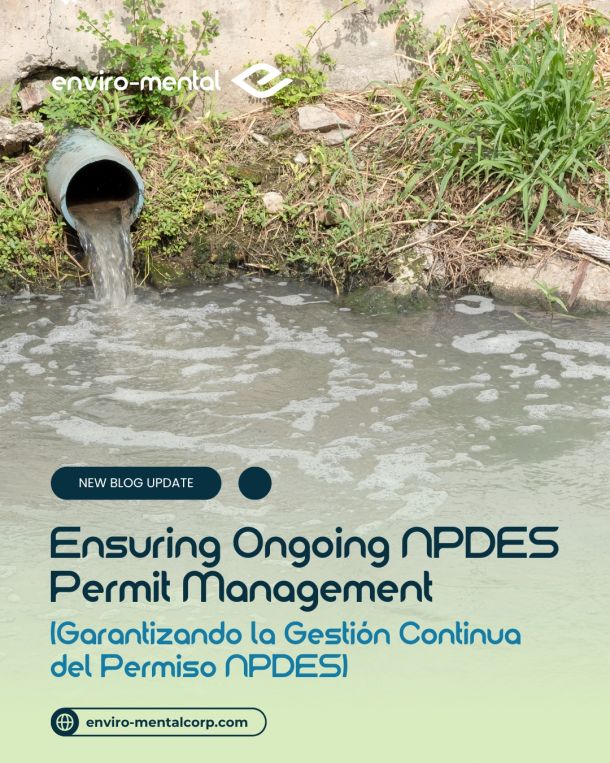-

Stay Updated with the Latest Environmental News – Blog in Texas
Houston Hazardous Waste Compliance Program Insights
Navigating the Complexities of TCEQ and EPA Regulations
For industrial facilities in the Houston area, managing hazardous waste is a significant responsibility with serious legal and environmental consequences. A robust compliance program is not merely about avoiding fines, it's about protecting your employees, the community, and the sensitive ecosystem of the Gulf Coast. Navigating the overlapping regulations of the Texas Commission on Environmental Quality (TCEQ) and the Environmental Protection Agency (EPA) requires a proactive and systematic approach. A well-structured program turns complex rules into manageable, daily actions.
The core principle of hazardous waste law is "cradle-to-grave" liability, meaning your responsibility for a waste begins at generation and continues through to its final disposal.
Why Houston's Regulations Demand Diligence
Fact #1: The Houston-The Woodlands-Sugar Land metropolitan area is home to one of the largest concentrations of petrochemical and manufacturing facilities in the world. This industrial density makes the region a primary focus for both TCEQ and EPA enforcement actions.
Fact #2: In a recent year, the TCEQ's enforcement actions for hazardous waste violations resulted in penalties totaling millions of dollars. Common violations included improper waste classification, inadequate container management, and failure to maintain accurate manifests.
Key Pillars of a Successful Compliance Program
1. Accurate Waste Identification and Classification
The foundation of your entire program is knowing your waste streams. Misclassification is a leading cause of violations. You must determine if your waste is:
-
Listed (F, K, P, or U codes)
-
Characteristic (Ignitable, Corrosive, Reactive, or Toxic)
Accurate profiling ensures proper handling, storage, and disposal from the start.
2. Meticulous Container Management and Labeling
From the moment waste is generated, it must be managed correctly.
-
Containers must be in good condition, compatible with the waste, and kept closed.
-
Labeling must be immediate and clear, stating "Hazardous Waste," the contents, and the accumulation start date. Unlabeled or mislabeled containers are a frequent violation during inspections.
3. Strict Adherence to Accumulation Time Limits
Your generator status (Very Small, Small, or Large Quantity Generator) dictates how long you can store waste on-site. Large Quantity Generators (LQGs), for instance, have a 90-day limit. Exceeding these limits is a serious violation. Your program must have a reliable system to track these dates.
4. Flawless "Cradle-to-Grave" Documentation
Your paperwork is your audit trail. A strong program ensures:
-
Manifests are completed without error and signed copies are retained.
-
Biennial Reports (for LQGs) are filed accurately and on time.
-
Training records for all personnel are current and detailed.
-
Land Disposal Restriction (LDR) notifications and certifications are properly completed.
5. Comprehensive Emergency Preparedness and Training
Your team is your first line of defense. Annual training is mandatory. Employees must know spill response procedures, the location of emergency equipment, and how to implement your Contingency Plan.
Conclusion: From Compliance to Culture
An effective hazardous waste compliance program is more than a set of procedures—it's an integral part of your operational culture. By building a program on these key pillars, Houston businesses can mitigate risk, operate with confidence, and demonstrate their commitment to safety and environmental leadership.
***************************************************************************************************
Claves sobre el programa de residuos peligrosos en Houston
Navegando las Complejidades de las Regulaciones de la TCEQ y la EPA
Para las instalaciones industriales en el área de Houston, gestionar residuos peligrosos es una responsabilidad significativa con serias consecuencias legales y ambientales. Un programa de cumplimiento robusto no se trata simplemente de evitar multas, sino de proteger a sus empleados, la comunidad y el sensible ecosistema de la Costa del Golfo. Navegar las regulaciones superpuestas de la Comisión de Calidad Ambiental de Texas (TCEQ) y la Agencia de Protección Ambiental (EPA) requiere un enfoque proactivo y sistemático. Un programa bien estructurado convierte las normas complejas en acciones diarias manejables.
El principio central de la ley de residuos peligrosos es la responsabilidad "de la cuna a la tumba", lo que significa que su responsabilidad por un residuo comienza en su generación y continúa hasta su disposición final.
Por Qué las Regulaciones en Houston Exigen Diligencia
Dato #1: El área metropolitana de Houston-The Woodlands-Sugar Land alberga una de las mayores concentraciones de instalaciones petroquímicas y manufactureras del mundo. Esta densidad industrial convierte a la región en un foco principal para las acciones de cumplimiento tanto de la TCEQ como de la EPA.
Dato #2: En un año reciente, las acciones de cumplimiento de la TCEQ por violaciones de residuos peligrosos resultaron en penalizaciones que totalizaron millones de dólares. Las violaciones comunes incluyeron clasificación incorrecta de residuos, gestión inadecuada de contenedores y fallas en el mantenimiento de manifiestos precisos.
Pilares Clave de un Programa de Cumplimiento Exitoso
1. Identificación y Clasificación Precisa de los Residuos
La base de todo su programa es conocer sus flujos de residuos. La clasificación incorrecta es una causa principal de violaciones. Usted debe determinar si sus residuos son:
-
Listados (códigos F, K, P o U)
-
Característicos (Inflamable, Corrosivo, Reactivo o Tóxico)
La caracterización precisa garantiza un manejo, almacenamiento y disposición correctos desde el principio.
2. Gestión y Etiquetado Meticuloso de Contenedores
Desde el momento en que se genera el residuo, debe gestionarse correctamente.
-
Los contenedores deben estar en buen estado, ser compatibles con el residuo y mantenerse cerrados.
-
El etiquetado debe ser inmediato y claro, indicando "Residuo Peligroso," el contenido y la fecha de inicio de acumulación. Los contenedores sin etiquetar o mal etiquetados son una violación frecuente durante las inspecciones.
3. Adherencia Estricta a los Límites de Tiempo de Acumulación
Su estatus de generador (Muy Pequeño, Pequeño o Gran Generador de Cantidad) dicta cuánto tiempo puede almacenar residuos en el sitio. Los Grandes Generadores de Cantidad (LQG), por ejemplo, tienen un límite de 90 días. Exceder estos límites es una violación grave. Su programa debe tener un sistema confiable para rastrear estas fechas.
**4. Documentación Impecable "de la Cuna a la Tumba"
Su papeleo es su traza de auditoría. Un programa sólido asegura:
-
Los Manifiestos se completan sin errores y se retienen las copias firmadas.
-
Los Informes Bienales (para LQGs) se presentan con precisión y a tiempo.
-
Los registros de capacitación de todo el personal están actualizados y detallados.
-
Las notificaciones y certificaciones de Restricción de Disposición en Tierra (LDR) se completan correctamente.
5. Preparación Integral para Emergencias y Capacitación
Su equipo es su primera línea de defensa. La capacitación anual es obligatoria. Los empleados deben conocer los procedimientos de respuesta a derrames, la ubicación del equipo de emergencia y cómo implementar su Plan de Contingencia.
Conclusión: Del Cumplimiento a la Cultura
Un programa efectivo de cumplimiento de residuos peligrosos es más que un conjunto de procedimientos: es una parte integral de su cultura operativa. Al construir un programa sobre estos pilares clave, las empresas de Houston pueden mitigar riesgos, operar con confianza y demostrar su compromiso con la seguridad y el liderazgo ambiental.
At Enviro-Mental Corp, we are committed to being your go-to resource for environmental management. Our expertise in Texas environmental regulations and management programs makes us the ideal partner for businesses looking to improve their compliance and sustainability efforts. We provide the tools and support you need to comply with all Texas environmental regulations. Trust us to deliver effective and sustainable environmental solutions that drive your business forward.
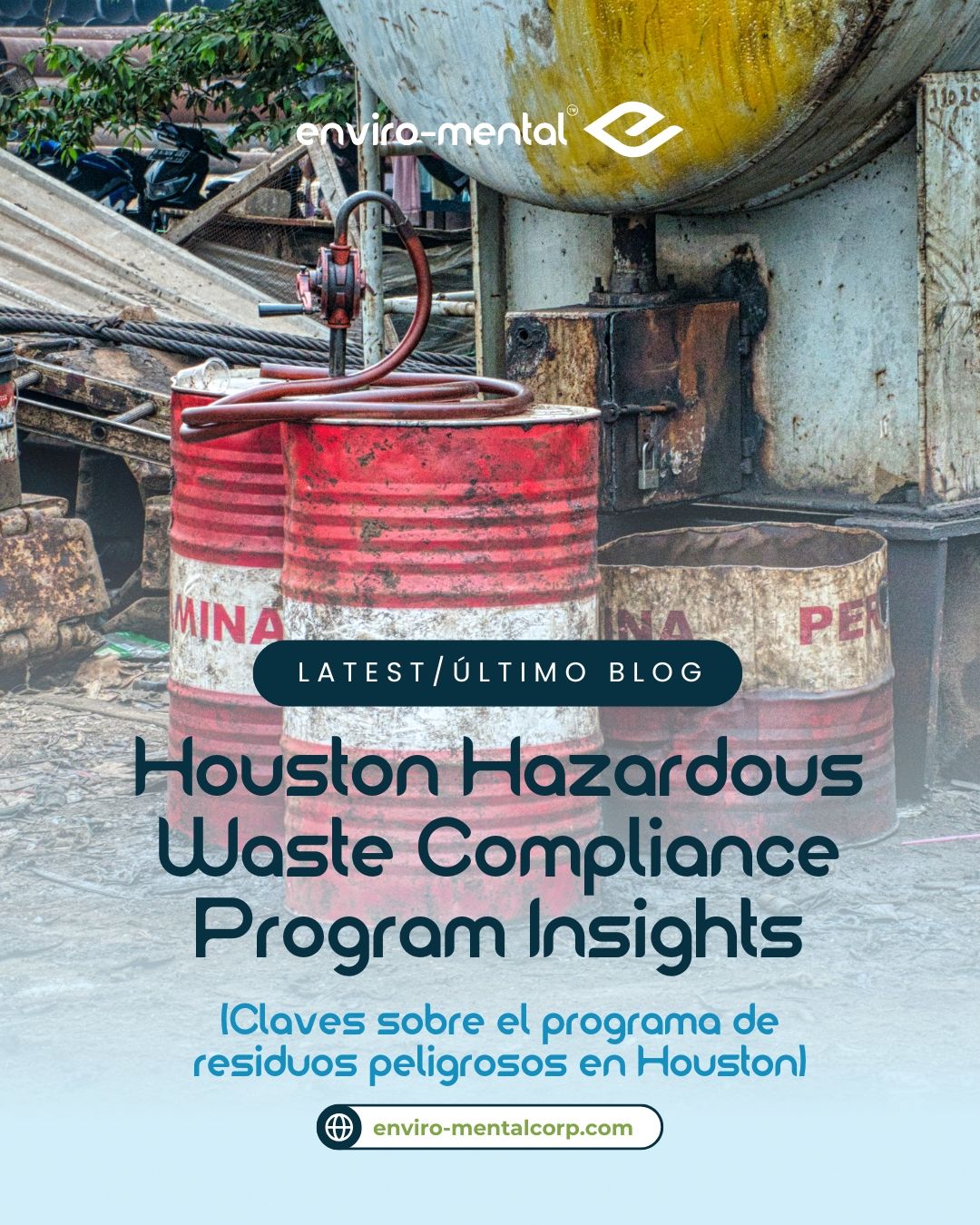
Nationwide best environmental practices, Nationwide BEP implementation services, Nationwide sustainability compliance programs, Nationwide BEP consulting solutions, Nationwide environmental risk reduction, Nationwide corporate green policies, National BEP compliance support, National sustainable operations guidance, National environmental standards programs, National BEP improvement plans, US-wide best environmental strategies, US-wide BEP regulatory alignment, US-wide environmental efficiency programs, US-wide green compliance services, US-wide BEP integration plans.
